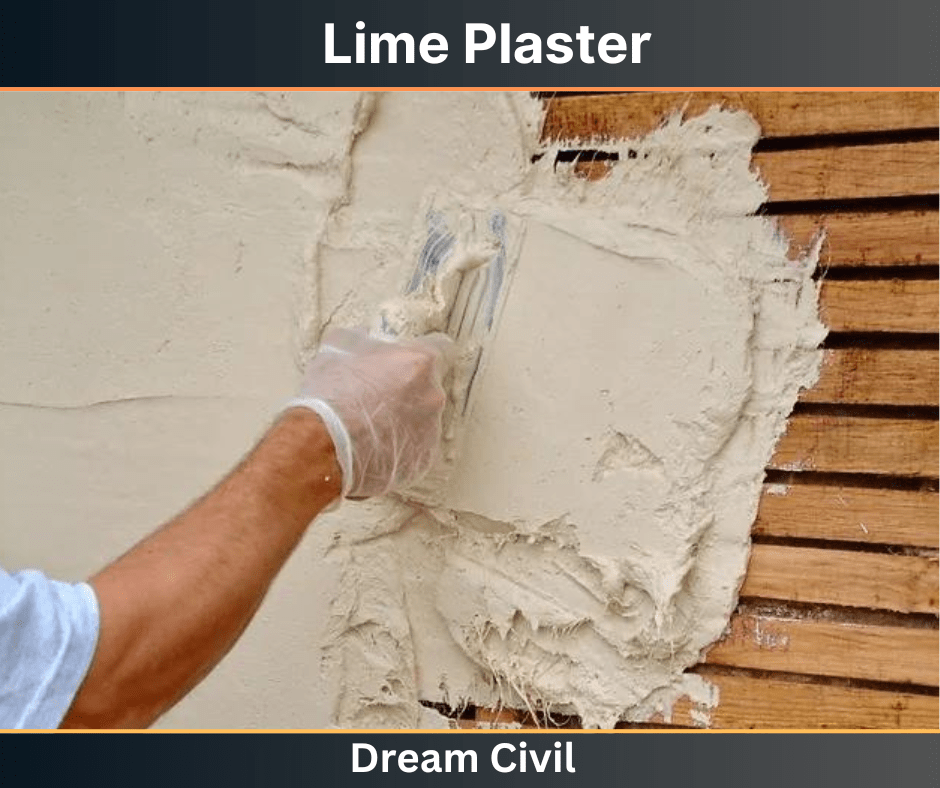Table of Contents
Plaster is a protective or decorative coat that is applied on walls, ceilings, floors, etc to protect them against weathering actions, chemicals, fungus, etc, and also to achieve a smooth surface.
Commonly; lime plaster and cement plaster are used in plastering work. In this article, we will discuss lime plaster.
The blended form of lime, sand, and water in definite proportion is lime plaster.
Or,
The plaster in which lime is used as a binding material is known as lime plaster.
Commonly, non-hydraulic hydrated lime (also called Slake lime, Air Lime, or High Calcium Lime) is used in this plaster.
Lime plaster is the oldest form of plaster. Its history goes back about 7,000 years predating the Romans and Egyptians.
This plaster sets slower so delays the construction processes. Its binding capacity is low compared to cement plaster.
Lime plaster is porous in nature as compared to cement plaster which allows the building materials to breathe and moisture to freely move in and out of the structure which is essential for the long-lasting of the structure.
It is less compact than that cement plaster and is prone to fewer cracks.
The proportion of lime and sand for lime plastering is generally taken as 1:3 to 1:4.
1. Preparation of Lime Plaster
a. Selection and Preparation of Ingredients
~ Non-hydraulic lime is mostly used in this plaster.
~ Sand having fine grains should be chosen.
~ Water having a PH value not less than 6 is used.
b. Mixing of Ingredients
Mixing of lime, sand, and water can be done manually or by machine mixing.
c. Transportation and Application of Plaster to the Surfaces
Thus prepared plaster is transported to the desired place and is applied to the surface manually or by using plastering pumps.
2. Advantages
a. It is quite plastic and workable as compared to cement plaster.
b. Although it gains strength very slowly but gains continuous strength over long periods.
c. It is less compact and is prone to fewer cracks.
d. It doesn’t dissolve in water like clay.
3. Disadvantages
a. On drying of this plaster; the PH value drops to about 8.6.
b. It requires water for setting; so we have to prevent this plaster from drying for several days.
c. It gains strength very slowly.
d. It has low binding strength as compared to cement plaster.
4. References1. Content Filter & Authenticity Checking Team, Dream Civil International (Our team checks every content & detail to maintain quality.) |
Read Also: Bamboo as a construction material

